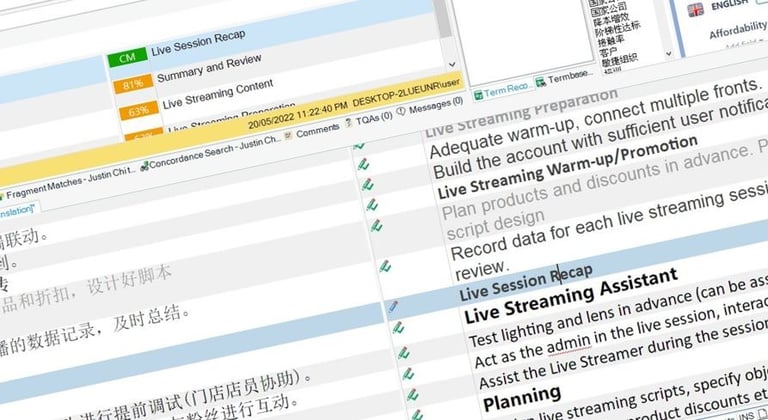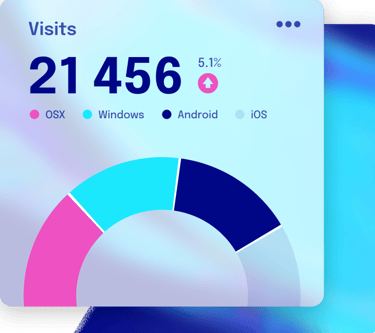At the dawn of a new revolution in language translation workflow
Contrary to Paul's (from Trados) conservative view on adopting Gnerative AI capabilities, I believe that we will soon experience a new round of revolution in translation workflow just like the one happened 7 years ago. In this article, I argue that AI can help improve not the translation itself, but rather, the workflow and efficiency surrounding it.


Trados is probably the most popular and powerful CAT (computer-assisted translation tool) widely used around the world, as a long-term user, I was expecting to see what actions they might have taken to utilise the new technology. Just rechecked with the Trados site today and saw no trace of putting OpenAI connection up as a priority for their translation workflow. This is odd as we probably all got a taste of how BingChat and Bard are making a major impact on professions that deal with words.
Honestly, I do not feel surprised as an experienced translator myself. The industry itself is not very tech-savvy but rather quite labour-incentive in tradition and believe it or not, I have seen experienced translators do not know how to set up formats in Office Word (there are many other misconceptions on translators but it's another topic).
A dedicated technician at Trado named Paul posted 3 months ago in response to a request for a plug-in (or connector) to OpenAI. The answer gives me a glimpse of Trado's mind behind. From his brief reply, it appears that they believe ChatGpt performs poorly in terms of translation accuracy, and therefore, deserves a low priority.
Understandably, AI tool is primarily designed to learn and foster creativity (or in other words, create new things), rather than repeating some written words with exactly the same meaning. This is not to mention that whoever took NAATI accreditation test would know that 'accuracy' is still defined conservatively under translation standards (in my view, one may falsely feel they are promoting word-to-word conversions).
Nevertheless, there is a first mover in connecting CAT tools to OpenAI (Custom.MT). In my personal opinion, its functions might not be worth a purchase at the moment as BingChat and Bard are readily available, what echoes my thoughts are the use cases mentioned in its FAQs. Some examples include:
Fintune the output style with instructions and a glossary.
Compare outputs from different machine translation (MT) models.
Improve quality by identifying and batch-processing errors.
Describe the persona and provide further instructions.
With Microsoft launching Copilot into its 365 suite, most of us probably have realised now that using Chatgpt as a live Wikipedia is too narrow. Its real potential is found in automation and digitisation of manual admin tasks. This applies to translators too - it will take some time for us to realise AI does not offer more accurate translation but rather will reshape the way we do every task around it.
This happened 7 years ago when the Neuro Network models appeared and the CAT tool began to pick up speed. The resulting engine such as DeepL is still one of the best MT tools we have today. However, did they make the translation more accurate? I'm afraid most would say no, or even the opposite. We have seen a lot more poorly translated signages and misguided beliefs based on self-used machine translation results.
Contrary to what translators feared (and they still do) 7 years ago, technological advancement did not replace them, nor translate for them. Rather, technology reshaped their workflow - we began to observe very diverged ways of how to do translation. Some prefer pre-translation, and some prefer post-editing, but we hardly reflect on how the days when we put Word files side-by-side have long gone.
Therefore, I would argue that it is not the translation itself (or simply, converting words) that Gpts can make an impact, but rather, it is many of the manual tasks that still slow us down that can be improved. To name a few: consistency, comprising translation results, term extraction, batch correction, nuance adjustment, and transcreation of marketing materials. At this moment, if you are a Trado user, you will know how complex the manoeuvres would be to get these things done right.
In retrospect, I have felt like becoming a witness to a revolution in the higher education sector since last December. By constantly tutoring business students and supervising them on how to complete their essays and research, despite the universities' conservative views on generative AI (as plagiarism). The way students learn and write their essays has already changed completely, and I could see no return to the previous era.
Similarly, whereas few CAT providers like Trados may carry a conservative view on their use of AI, I suspect that at this very moment, hundreds of thousands of translators or even language service providers (LSPs) have already begun innovatively bridging between the tools, coming up with new workflows, and therefore, initiate a new revolution from the bottom up.

